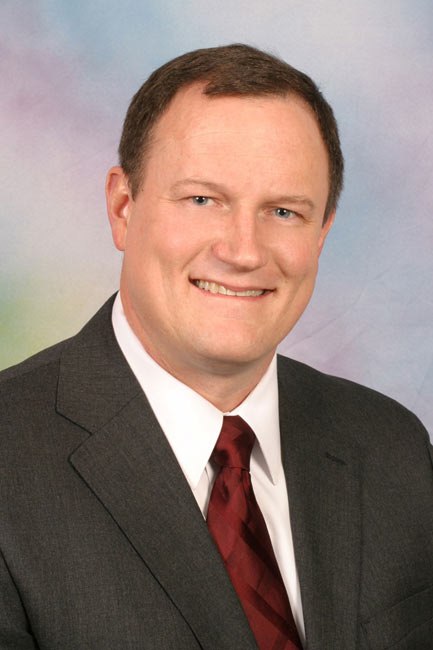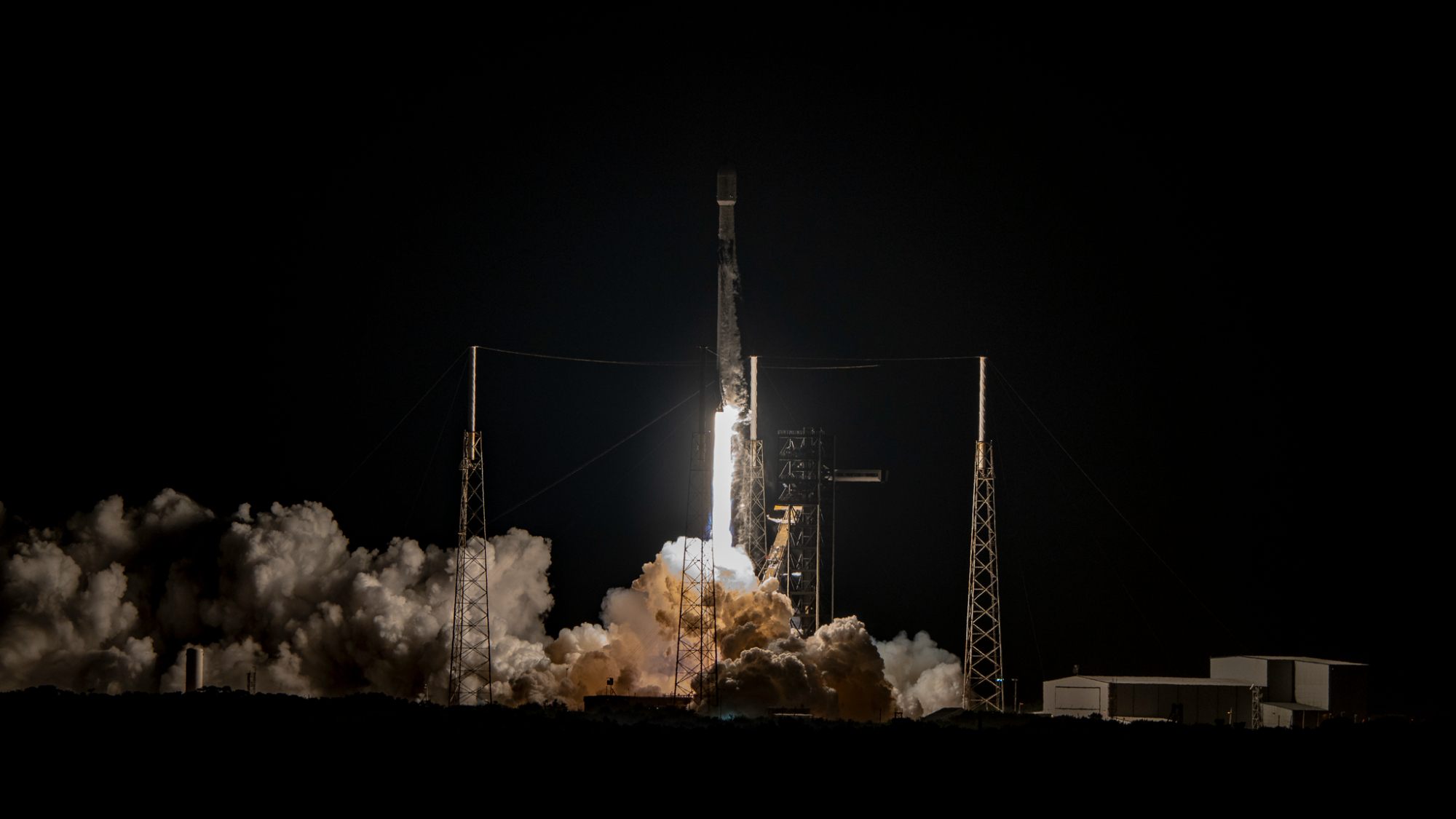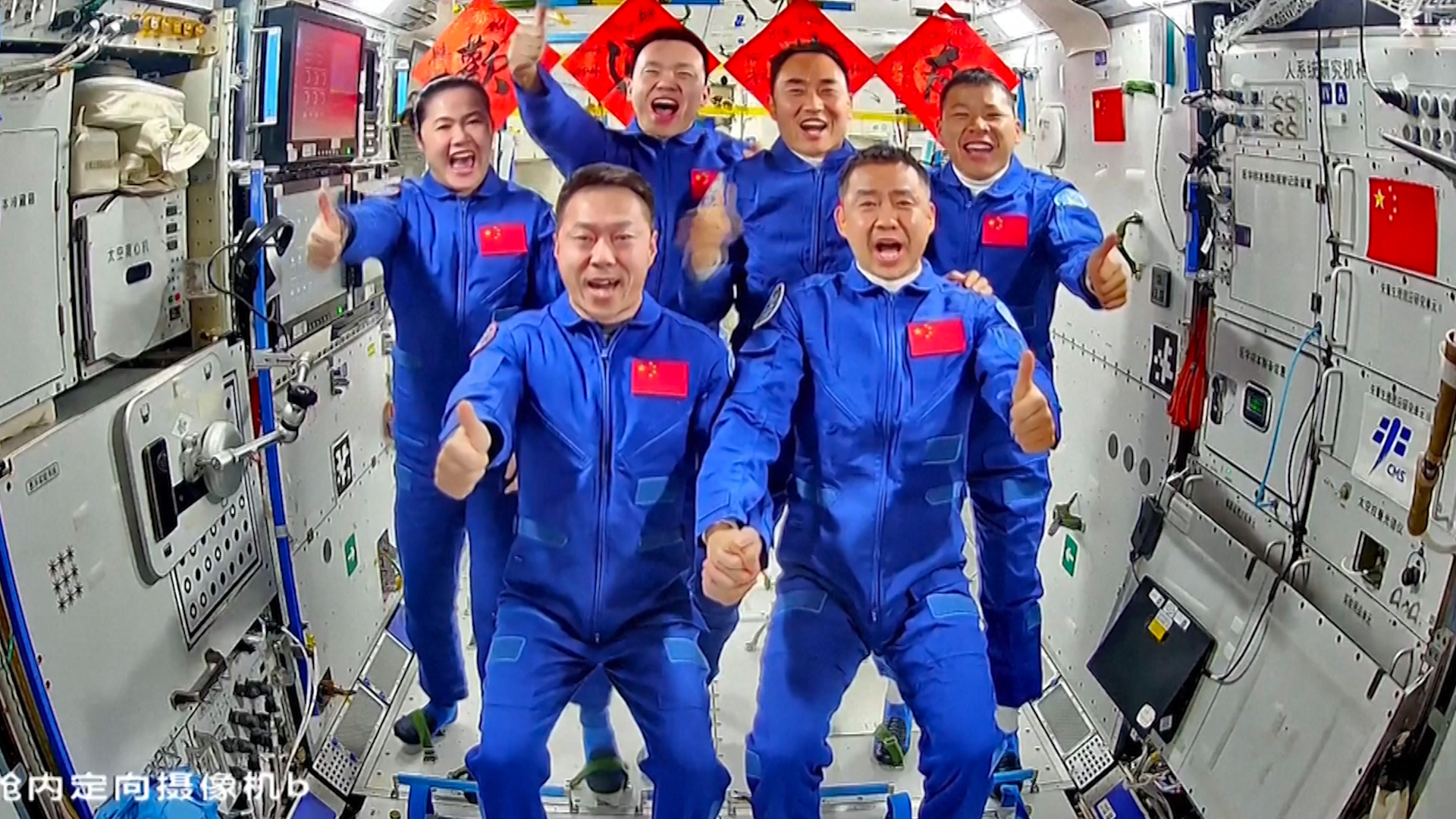Family Trip to Kansas Space Museum Yields New Cosmosphere CEO

When NavyCommander Christopher Orwoll began planning a trip for his family to the KansasCosmosphere and Space Center in Hutchinson, he was intending to further hishobby. Instead, Orwoll discovered a new profession.
The formercommanding officer of the Naval Reserve Officer Training Corps and professor ofnaval science at the University of Kansas, Orwoll was named the new presidentand CEO of the Cosmosphere last month after his predecessor, Jeff Ollenburgerresigned in October. Ollenburger had held the position since 2002, replacingCosmosphere co-founder Max Ary.
Billed ashaving a U.S. space artifact collection second only to the National Air and SpaceMuseum and the largest collection of Russian space artifacts outside of Moscow,the Kansas Cosmosphere gained international attention for its restoration ofthe Apollo 13 command module Odyssey and astronaut Gus Grissom's Liberty Bell 7Mercury spacecraft. The latter was raised from the ocean floor where it had satfor nearly 40 years as part of an expedition co-led by the museum. Bothspacecraft are now on display at the Cosmosphere.
Orwoll, whopreviously served as the executive officer of the USS Dolphin, the world'sdeepest diving submarine, spoke with collectSPACE.com recently, after hisfirst week at the Cosmosphere's helm.
collectSPACE (cS): Whatled you to consider applying for the leadership of a space history museum?
Chris Orwoll (CO): Partof that is easy, just the fact of where I grew up. I grew up in Downey,obviously with the connection there with North American Aviation / NorthAmerican Rockwell. I can show you pictures of myself as a six year old shakinghands with astronauts who were there for their tours following their missions.So I have always kind of been a space nut, and have kind of done this as ahobby, shall we say over the last -- however many years is that -- quite a fewwhile I have been serving in the Navy. When I happened to start planning a tripfor my family out to the Cosmosphere, I noted that the position here was openand kind of looked at it and said, "What better opportunity here with mybackground in the Navy, to maybe take a shot at working with the museum hereand heading it up, combining, shall we say, hobby and leadershipexperience?"
cS: How wasyour first week on the job? How have you found your transition?
Get the Space.com Newsletter
Breaking space news, the latest updates on rocket launches, skywatching events and more!
CO: The workload is pretty heavy rightnow because it's a lot of learning. I'm on a pretty steep learning curve rightnow, as you can well imagine, with my lack of background in the museumindustry. That being said, a leadership position is a leadership position andthe staff here is fantastic, so that part of it has been really easy. Thevolunteers here are a marvelous group of individuals and the paid staff isamazingly dedicated. So it's been a really easy transition coming out of themilitary thus far.
cS: Havethere been any surprises?
CO: Really no, because I expected to besurprised every single morning. Like I said, its a learning curve. The joke,there is a saying in the military that you are being 'fed by the fire hose'right now. I am drinking from a fire hose as far as all the information I amtrying to take in regards to operation of the museum, artifact preservation,collection, etc., and as these are areas I have not dealt with in the past. I'mhaving to get up to speed very quickly.
cS: Have you inherited projects alreadyunderway and/or what are you focusing on next?
CO: Some of the big projects that wehave on-going, probably the biggest we have, is the work we are doing for theEvergreen Aviation Museum out in McMinnville, Oregon and that is proceeding atpace. We're on schedule for what we are going to be providing for them, all theexhibit structure for it. We're making little changes here and there, which areall based on which artifacts we can get ahold of, which ones they want, etc. Infact, we'll be going out to them for a meeting just in another couple of weeksto kind of finalize virtually everything. We are building the stands for theartifacts that we are going to be sending out there, simulators, etc. So, thatis kind of one big thing that's on-going.
In additionto that, we just purchased some land across the street, just closed on it lastmonth. We used to have a small parking lot across the street. There used to bea building next to it. We now own that land as well. That opens up, shall wesay, a whole plethora of possibilities. We are bandying about the ideas rightnow of taking our camp/educational facilities, the Future Astronaut TrainingProgram and those sort of things and moving them all maybe across the street.That would open a ton of space up here for artifacts and exhibits in the museumthat we haven't had available to us in the past.
Over thenext three to five months, we are going to be sitting down and really trying tofocus on a strategic plan that is going to take us in the next one to five and10 years. What's our focus going to be? How are we going to do this? We've gotto start raising money if we are going to talk about building a building thatsize across the street. Those are kind of the dreams being bandied about rightnow, but nothing is set down on paper yet.
cS: The Cosmosphere made a name foritself, in part due to its restoration services. Are there artifacts undergoingrestoration at the museum now?
CO: We've got a V-2 rocket right now that'ssitting in our warehouse over on the other side of town. It's for one of thearmy bases we're restoring that. It's simple paint job for the most part; it'snot a full restoration, it's a cosmetic restoration. And they've got a couplemore rockets that they may want us to take a look at as well.
We're doingsome small restoration projects as well for the Evergreen museum, and that'sjust a piece we have had in our collection, the Mercury 10 capsule, that we'regoing to be sending out there.
Other thanthat, nothing specific right now in our hands or that we're negotiating as wespeak, but I think that's just a matter of time.
Continue readingcollectSPACE.com's interview with Cmdr. Orwoll, including his commentsabout the effects of the recent federal trial against one of hispredecessors.
Copyright 2007 collectSPACE.com. All rights reserved.

Join our Space Forums to keep talking space on the latest missions, night sky and more! And if you have a news tip, correction or comment, let us know at: community@space.com.

Robert Pearlman is a space historian, journalist and the founder and editor of collectSPACE.com, a daily news publication and community devoted to space history with a particular focus on how and where space exploration intersects with pop culture. Pearlman is also a contributing writer for Space.com and co-author of "Space Stations: The Art, Science, and Reality of Working in Space” published by Smithsonian Books in 2018.In 2009, he was inducted into the U.S. Space Camp Hall of Fame in Huntsville, Alabama. In 2021, he was honored by the American Astronautical Society with the Ordway Award for Sustained Excellence in Spaceflight History. In 2023, the National Space Club Florida Committee recognized Pearlman with the Kolcum News and Communications Award for excellence in telling the space story along the Space Coast and throughout the world.









